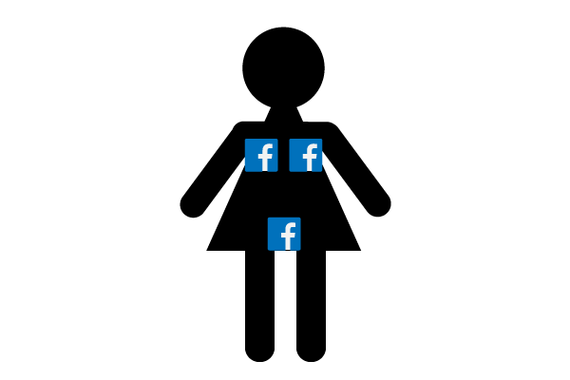Facebook's handling of their spat with Norway's leading newspaper Aftenposten, the Norwegian Prime Minister and millions of outraged users is old news. But this case has some uncanny resonances with another high tech nudity argument - over NASA's Pioneer 10 plaque - which like the photo of Kim Phúc, also dates back to the early '70s. It shows a curious twist of cognitive bias akin to 17th century art censorship in social media's largest cultural melting pot. Behind their liberal marketing communications, has Facebook inherited some dissonant old fashioned notions of public decency?

image credit Andrew Keith Walker
You're probably aware of the timeline. Writer Tom Egeland posted an article featuring Nick Ut's Pulitzer Prize winning 1972 image of 9-year-old Kim Phúc and other children burned by napalm. Facebook deleted the post on the grounds it violated community standards (child nudity) and suspended Egeland's account. When Aftenposten reposted the article, Facebook told them to remove it or pixellate Kim Phúc's nudity, subsequently removing Aftenposten's article themselves. Then everyone from the Norwegian PM Erna Solberg to ordinary users reposted the image in protest. Facebook, insisting they were a community focused tech company - and therefore merely enforcing their own content policy rules on nudity in user posts - climbed down about a week later.
The problem was one of editorial judgement for the newspaper and a distinct lack of it by Facebook. That photo isn't merely an image, it's a historical document. It's an image that is already in the public domain and of great historical significance as a primary source in war reporting. Judging that kind of image by the same rules that apply to general nudity, porn or illegal images of child abuse is bizarre.
Would Facebook ban pictures of Auschwitz mass graves on the grounds of nudity? No. Would it classify Botticelli's Venus in the same category as some dodgy schoolgirl Hentai? No. Mark Zuckerberg's response that they aren't a media company and tech platform content rules are there for a reason (the "we're just geeks" defence) doesn't wash. With billions of eyeballs and petabytes of content, they're a media company whether they like it or not. They made a bad call, simple as that.
The similarities to a similar case of bone-headedness at NASA reveal something else about the decision. Back in 1972, when Carl Sagan was designing the message plaque that was attached to the Pioneer 10 spacecraft, a similar issue occurred over the depiction of naked humans. The man is anatomically accurate, but the woman has no genitals. Many in the scientific community claimed this omission made the role of gender in human reproduction confusing to any ET that might try to work out what it meant, but nevertheless Sagan asked the artist (his wife Linda Salzsman Sagan) to remove the labia line from the woman's mons pubis, apparently to appease objections from NASA's then head of space science, John Naugle. This was the 1972 equivalent of pixellating-out the same region of Kim Phúc's body, as Facebook originally suggested to Aftenposten.
Both cases are redolent of influential figures demanding fig leaves obscure the genitals of artistic nudes in centuries past. The Pioneer 10 images were based on Da Vinci's anatomical studies and, like renaissance artworks that received retrofitted fig leaves, the blanked female crotch suggests the strange idea that all instances of female nudity imply a sexual dimension of some sort. Which is nonsense, as every male who's used a mixed European sauna, taken children to the seaside, worked in a hospital / health spa / leisure centre / backstage at London Fashion Week or seen their mum in the bath knows... as well as every single woman in the world, ever.
This prudish knee-jerk response to female nudity is an unconscious gender bias, particularly strong in the USA and UK. Naked or fig-leaved, it makes little difference to male artistic nudes because it's physically obvious when the naked male image is presented in a sexual context. Female nudity in art has always been treated as sexually ambiguous by the censoring eye. The history of art is full of male nudes defined by their context and female nudes defined by nothing more than their basic anatomy, regardless of context. It's the visual materialisation of the term "sex object".
The photo in question raised objections to its full frontal nudity in the 1970s too, which shows how Facebook's attitudes to nudity are still stuck, partially at least, in the past. Should users expect a high tech, socially progressive corporate giant to put more effort into addressing the editorial issues relating to philosophical, moral or artistic matters? The reaction to the Kim Phúc photo spat suggests the answer is yes. Censoring journalism and redacting Pulitzer Prize winners doesn't fit with Facebook's mission statement to make the world more open and connected, does it?
